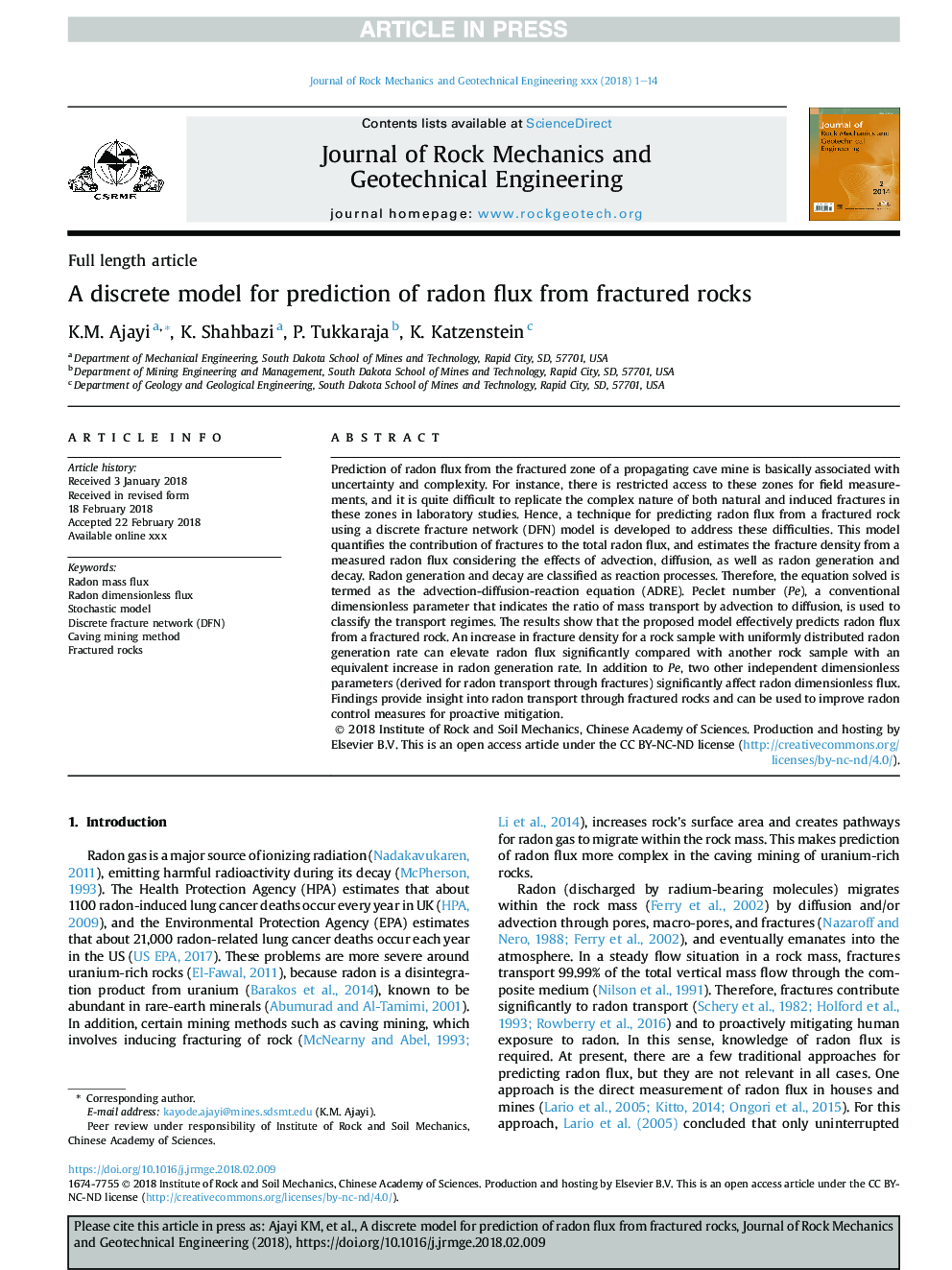| Article ID | Journal | Published Year | Pages | File Type |
|---|---|---|---|---|
| 11017526 | Journal of Rock Mechanics and Geotechnical Engineering | 2018 | 14 Pages |
Abstract
Prediction of radon flux from the fractured zone of a propagating cave mine is basically associated with uncertainty and complexity. For instance, there is restricted access to these zones for field measurements, and it is quite difficult to replicate the complex nature of both natural and induced fractures in these zones in laboratory studies. Hence, a technique for predicting radon flux from a fractured rock using a discrete fracture network (DFN) model is developed to address these difficulties. This model quantifies the contribution of fractures to the total radon flux, and estimates the fracture density from a measured radon flux considering the effects of advection, diffusion, as well as radon generation and decay. Radon generation and decay are classified as reaction processes. Therefore, the equation solved is termed as the advection-diffusion-reaction equation (ADRE). Peclet number (Pe), a conventional dimensionless parameter that indicates the ratio of mass transport by advection to diffusion, is used to classify the transport regimes. The results show that the proposed model effectively predicts radon flux from a fractured rock. An increase in fracture density for a rock sample with uniformly distributed radon generation rate can elevate radon flux significantly compared with another rock sample with an equivalent increase in radon generation rate. In addition to Pe, two other independent dimensionless parameters (derived for radon transport through fractures) significantly affect radon dimensionless flux. Findings provide insight into radon transport through fractured rocks and can be used to improve radon control measures for proactive mitigation.
Related Topics
Physical Sciences and Engineering
Earth and Planetary Sciences
Geotechnical Engineering and Engineering Geology
Authors
K.M. Ajayi, K. Shahbazi, P. Tukkaraja, K. Katzenstein,
